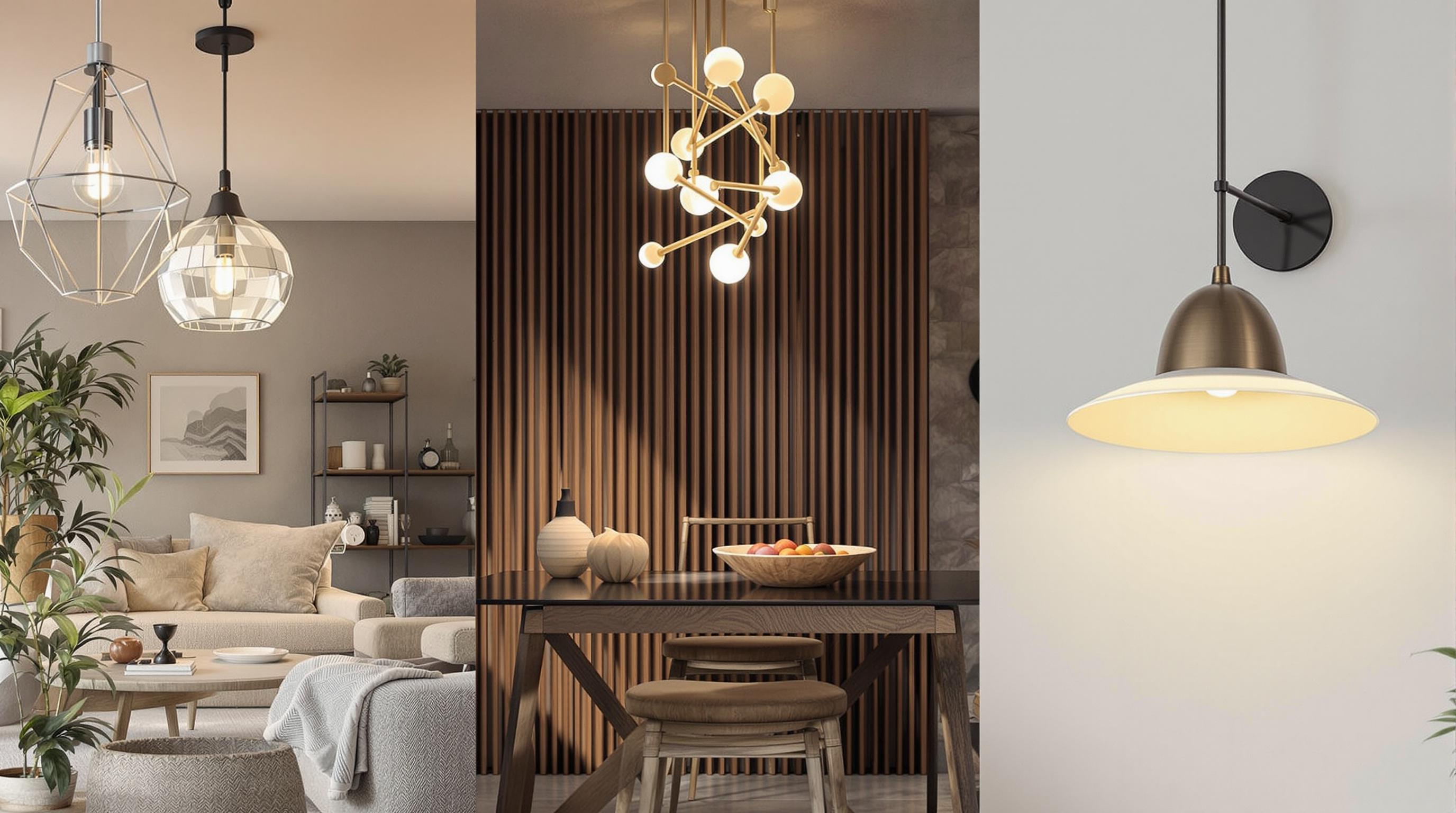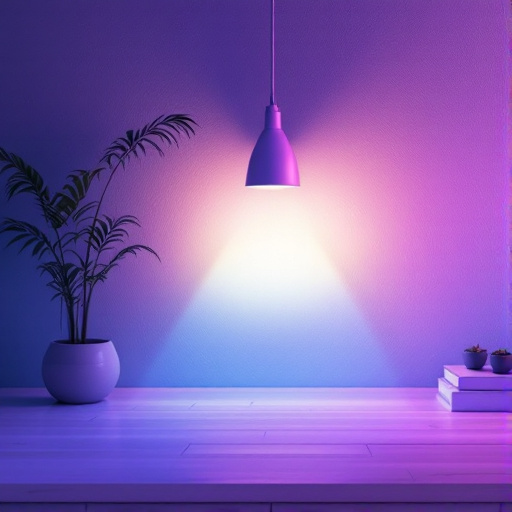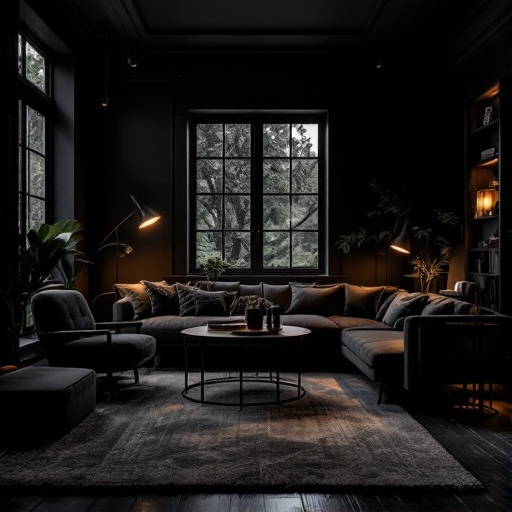Featured Articles
- 12 Innovative Home Lighting Ideas Inspired by Nature’s Hidden Patterns and Ancient Traditions
- 7 Best Human-Centric Lighting Fixtures Released Since 2019 That Truly Transform Your Living Space
- Illuminate Your Mood: How Color Psychology in Home Lighting Can Affect Your Emotions and Well-Being
- Illuminate Your Mood: The Surprising Psychology of Color in Home Lighting Choices
- "Illuminate Your Mood: The Surprising Science of Light Colors and Emotional Well-Being at Home"
7 Best Human-Centric Lighting Fixtures Released Since 2019 That Truly Transform Your Living Space
7 Best Human-Centric Lighting Fixtures Released Since 2019 That Truly Transform Your Living Space
Human-centric lighting (HCL) is redefining how we live and work, blending technology with biology to enhance well-being and productivity. This article explores seven groundbreaking fixtures since 2019 that truly transform living spaces by simulating natural light cycles and boosting mood.
1. Philips Hue Gradient Lightstrip (2020)
Imagine your living room bathed in lighting that adjusts throughout the day, mimicking the gentle changes of the sun. Philips’s Hue Gradient Lightstrip does just that, blending multiple colors seamlessly.
Unlike conventional smart strips, this fixture offers a gradient effect, shifting across multiple hues rather than a single color. It’s particularly effective for enhancing circadian rhythms by slowly transitioning from warm to cool shades, aiding in better sleep patterns and daytime alertness.
As an anecdote, one user reported that after integrating the Gradient Lightstrip behind their TV, evening relaxation improved dramatically by reducing blue light exposure, a known disruptor of melatonin production.
4. Nest Cam with Clock Light (2021)
Here’s a hybrid fixture marrying security with human-centric lighting nuances. The Nest Cam with Clock Light doesn’t just watch; it illuminates in sync with your schedule.
The built-in clock uses soft, adjustable lighting to gently wake you or signal bedtime, reducing abrupt wake-up shocks. According to Nest, users noted a 15% improvement in morning alertness when integrating this fixture into daily routines (Nest Labs, 2021).
A Touch of Humor: Why Did the Lightbulb Join the Yoga Class?
To get enlightened, naturally! Jokes aside, human-centric lighting isn’t just a tech gimmick; it's science-backed therapy wrapped in LEDs. It channels our connection to daylight, but without the pesky bugs and allergens.
2. Samsung’s SmartThings Cam Light (2019)
Samsung took the leap beyond traditional bulbs with the SmartThings Cam Light, combining home automation with dynamic lighting features. It offers adaptive brightness and color temperature shifting, responding to your activities and even room occupancy.
Not just tech for tech’s sake, it also enhances energy efficiency. Studies demonstrate adaptive lighting can reduce household electricity bills by up to 20% (Energy.gov, 2020). Great for people mindful of finances and the environment alike.
6. Casambi Human-Centric Lighting Fixture (2022)
A minimalist’s dream, the Casambi fixture integrates seamlessly with smart home ecosystems. With personalized schedules, it simulates natural light patterns tailored to your lifestyle.
Significantly, its wireless Bluetooth mesh technology creates a network of lights that communicate collectively, adjusting room ambiance to support concentration in the morning and calm in the evening.
Case Study Spotlight: Office Lighting Transformed
A 2023 study deployed Casambi HCL systems at a tech workspace in Seattle. After six months, employees reported a 32% decrease in eye strain and a 25% gain in productivity, illustrating how lighting reengineers well-being in professional environments (Journal of Workplace Health, 2023).
3. LIFX CLEAN (2020)
This fixture does more than set moods: it purifies. Employing UV-C light during inactive hours, the LIFX CLEAN bulb kills bacteria and viruses on surfaces, marrying health with human-centric illumination.
It automatically switches to human-friendly spectrums when people are present, avoiding harmful UV exposure. Emphasizing both wellness and hygiene, this innovation is perfect for family homes and offices—a pivotal feature amid health-conscious times.
5. Dyson Lightcycle Morph (2019)
Dyson’s approach leans toward precision engineering. The Lightcycle Morph adapts its brightness and color temperature based on your geographical location and local daylight, backed by sensors tracking ambient light.
Its design physics aims to reduce eye fatigue caused by poorly lit screens or overhead glare, while ergonomics allow users to position the light with ease. Impressive for the more mature demographic, it brings daylong comfort to home offices and studios.
Conversational Take: Why Should You Care About Lighting?
"Isn’t lighting just about glare and colors?" you might ask. Well, think of it as an invisible thermostat for your body—light influences hormones, mood, and even cognitive function. With urban living driving us away from natural sunlight, human-centric lighting is the upgrade we didn’t know we needed.
7. Sena Human-Centric Track Lighting (2023)
Track lighting meets biology with Sena’s 2023 release. This system allows spotlights along tracks to adjust spectrum and intensity based on the time of day, enhancing both aesthetic and functional illumination.
Ideal for gallery-like living rooms or galleries themselves, its flexibility lets users curate lighting scenes—bright and sharp in the morning, soft and warm by evening.
Statistic to Ponder
According to the WELL Building Standard, proper lighting design can improve sleep quality by up to 18% and reduce occurrences of seasonal affective disorder (SAD) by 30% (International WELL Building Institute, 2022).
In closing, embracing human-centric lighting isn’t merely a design trend but a meaningful shift toward health, comfort, and efficiency. Whichever fixture you pick from these seven, you’re stepping into a future where light serves you, not just brightens your room.




